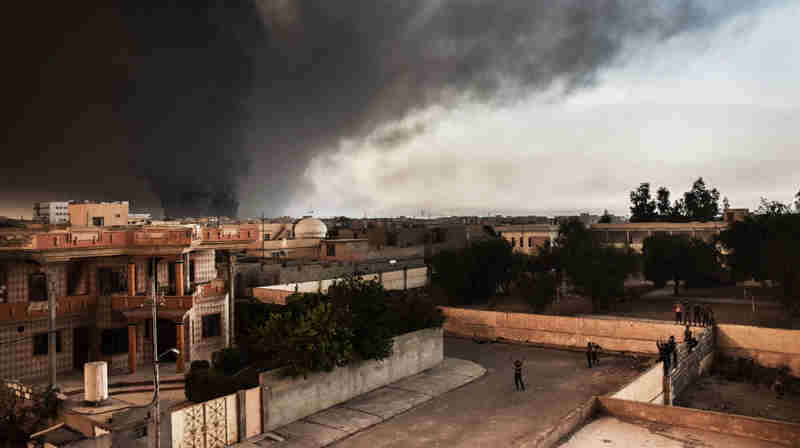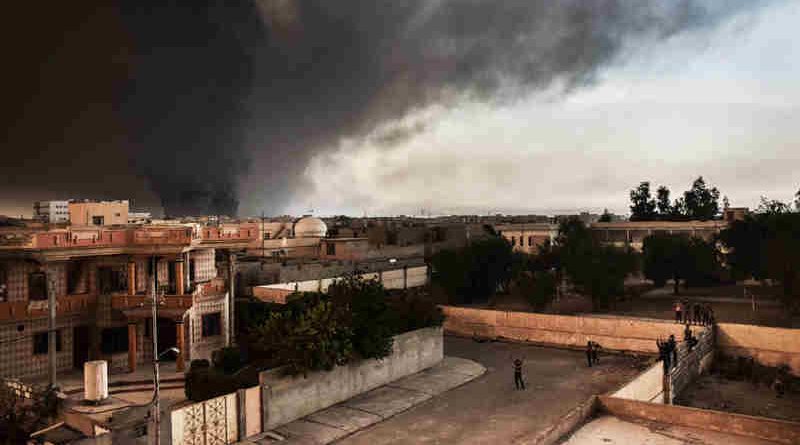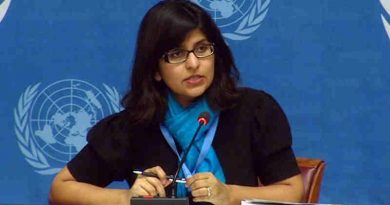Islamic State Terrorists Continue to Use Human Shields in Mosul

The United Nations (UN) human rights wing said Tuesday it has received reports that the Islamic State of Iraq and the Levant (ISIL/Da’esh) fighters are attempting to forcibly transfer many civilians closer to Mosul, including near its own military installations, which could be targets as the Iraqi Government’s offensive to retake the city intensifies.
The Office of the UN High Commissioner for Human Rights (OHCHR) reported that on Monday morning, ISIL attempted the forcible transfer of some 25,000 civilians towards locations in and around Mosul. While coalition flights patrolling the area foiled the effort, some buses did reach Abusaif, 15 kilometres north of Hamam Al-Alil City, south of Mosul.
The UN had earlier cautioned that it may not be easy for Iraqi forces to defeat ISIL terrorists because they are using civilians as human shields in Mosul. Also, ISIL has been forcing people from their homes in sub-districts around Mosul.
They include nearly 8,000 families the group abducted, since the operations to restore Iraqi Government control over Mosul began about two weeks ago, the Office of the UN High Commissioner for Human Rights (OHCHR) said Friday.
In the operation to liberate Iraq’s second-largest city from the control of the Islamic State of Iraq and the Levant/Syria (ISIL/ISIS) militants, Iraqi and Kurdish forces continue clearing and back-clearing areas around Mosul before they advance to the city.
It was told last Friday by a spokesman of the Combined Joint Task Force Operation Inherent Resolve. Air Force Col. John Dorrian briefed the Pentagon press corps via videoconference from Baghdad on Iraq’s progress to liberate Mosul.
“We have grave concerns for the safety of these and the tens of thousands of other civilians who have reportedly been forcibly relocated by ISIL in the past two weeks,” OHCHR spokesperson Ravina Shamdasani told reporters at the regular bi-weekly press briefing in Geneva on Moday.
She explained that ISIL brought dozens of long trucks and mini-buses to Hamam al-Alil City – most of which were prevented from proceeding towards Mosul by coalition flights.
Responding to questions, she said OHCHR had observed a pattern: ISIL was taking people closer and closer to Mosul city, and putting them close to their offices and to military installations which could be targets.
The OHCHR spokesperson elaborated on further reports of mass killings by ISIL, noting that this past Saturday, 40 former Iraqi Security Force (ISF) soldiers were killed and their bodies thrown in the Tigris River.
The soldiers were reportedly among the civilians who had been abducted earlier from al-Shura sub-district of Mosul and from villages surrounding Hamam al-Alil.
According to Ms. Shamdasani, there have also been reports that ISIL has been threatening relatives of people they suspect are supporting the Iraqi Security Forces.
Photo courtesy: United Nations





